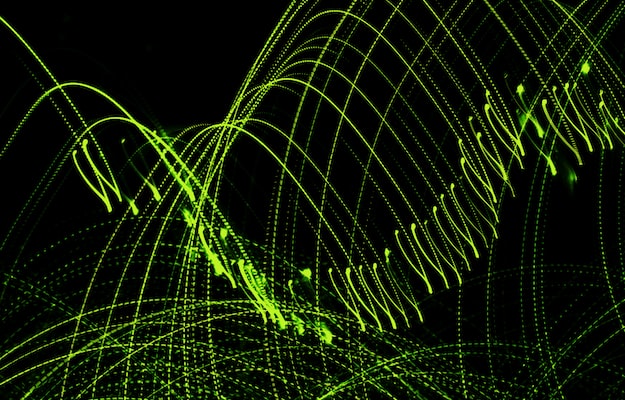Laser cutting is an incredibly useful tool for metal working and crafting. It has revolutionized the industry with its precision and time-saving effects. This article covers the professional strategies for laser cutting metal – the most efficient and effective methods of achieving the desired results. Here we’ll discuss the best practices for setting up a cutting system and the various techniques employed to maximize output and quality. Read on to learn how to make the most out of laser cutting metal.
Safety Considerations
Environmental hazards
When it comes to laser cutting metal, safety should be the top priority. One of the major environmental hazards associated with laser cutting metal is the emission of contaminants, including dangerous particulate matter, vaporized metal and fumes. While laser cutting metal is highly efficient and precise, it can also create hazards for workers and the surrounding environment.
Before beginning any laser cutting operations, it is critical to ensure adequate ventilation and dust collection services are in place. This can help to reduce airborne emissions, as well as protect workers from inhaling hazardous dust particles.
Protective equipment
When it comes to laser cutting metal, safety must be a top priority for professionals. Personal Protective Equipment (PPE) is essential to protect workers from the hazards of laser cutting. This includes, but is not limited to, safety eyewear, protective clothing, breathing masks, and protective gloves.
Safety eyewear is essential for protecting against illumination from the laser light. The eyewear should block the wavelength of the laser light and the power level at which it is set.

Types of Lasers Used for Metal Cutting
Carbon dioxide lasers
Carbon dioxide (CO2) lasers are among the most widely used lasers for metal cutting. This is because they are relatively affordable, easy to use and maintain, and have a good power output. The laser is most often used for precision cutting of thin metal sheets, such as stainless steel, aluminum and brass.
The CO2 laser produces a beam of infrared light which is specifically tuned to the absorption frequencies of metals, making it an ideal tool for laser engraving, cutting and marking. It can also be used for engraving on plastics and other non-metallic materials.
Fiber lasers
Fiber lasers are a type of laser used for metal cutting that has grown rapidly in popularity in recent years. This is due to their high power output, their ability to provide fast precision cutting, as well as their relatively low cost and maintenance requirements compared to other laser types. This makes fiber lasers one of the best and most economical laser types for metal cutting applications, making them an excellent choice for professional or industrial uses.
Fiber lasers work by focusing a beam of intense light onto the material being cut, melting or vaporizing it.
Nd:YAG lasers
Nd:YAG lasers, or neodymium-doped yttrium aluminum garnet lasers, are a popular option for professional laser cutting of metals. These lasers employ a high-power laser beam to cut through a wide variety of metals, ranging from thin sheet metal to thick factory plates. Nd:YAG lasers are split into two categories – pulsed and continuous wave.
Pulsed lasers send high-energy pulses of light that quickly heat and evaporate the metal, leaving behind a smooth, precise cut.

Beneficial Techniques for Laser Cutting Metal
Speed optimization
Speed optimization is one of the most important factors when it comes to laser cutting metal. Thankfully, there are several things you can do in order to maximize the speed at which you are able to cut through metal with a laser. First, use a high-powered laser with a small focal spot size to reduce the amount of heat.
Beam focus
The ability to precisely focus the laser beam is essential when it comes to laser cutting metal. The more accurately the beam is focused, the more accurate cuts you can achieve. In order to do this, there are a few strategies and techniques that should be employed.
Firstly, make sure that the focal length and focus diameter of the laser cutting machine is chosen correctly. The focus length should be adjusted to the size of the material you are cutting, and this will ensure the beam does not overheat or burn the material.
Edge finishing
Edge finishing is an important step after laser cutting metal. It is the process of refining the edges of the metal to make them smoother, more precise and aesthetically pleasing. Edge finishing is beneficial for reducing burr and roughness of the edge along with increasing the accuracy and repeatability of the cuts.
There are a few strategies for edge finishing such as manual grinding, sanding, and die grinding. Manual grinding makes use of a grinding wheel that is placed onto the edge of the metal to be refined. The grinding wheel exerts pressure on the metal surface as it spins, and the metal particles from the edge of the cut get swept away and disposed.

Best Practices for Laser Cutting Metal
Adjusting laser power
Adjusting laser power is a critical factor when it comes to professional strategies for laser cutting metal. Laser power is the amount of energy that is transmitted by the laser to vaporize the material – typically metal – during the laser cutting process. It’s important to adjust the laser power to the proper levels so that enough of the material can be vaporized for a quality and precise cut, but not too much so that the surrounding area is damaged or deformed.
Adjusting cutting speed
Adjusting cutting speed is a key factor in professional laser cutting metal. Different kinds of metals require different cutting speeds, so it is important to experiment with different speeds to find the right one. Generally, softer metals like aluminum require slower cutting speeds than harder metals like stainless steel.
Faster cutting speeds can cause overburning – higher-than-ideal temperatures from the laser can cause an undesired, darker finish in the cut metal.
Adjusting gas pressure
One of the most important aspects of laser cutting metal is adjusting the pressure of the gas used for the process. The various gases used for laser cutting metal can vary greatly in terms of pressure, and it is essential that the pressure is adjusted correctly to ensure the best results. The gas pressure during laser cutting metal affects the speed of the laser, the depth of the cut, and the total amount of power that the laser is able to produce.

Troubleshooting Common Laser Cutting Issues
Warp
When it comes to laser cutting metal, warp is one of the most common issues that arise. Warp is when the metal bends, curves, or distorts during or after the laser cutting process. This can happen when heat is not distributed evenly throughout the material and lead to uneven parts, which can be time consuming and costly to rework.
To prevent warp from happening, there are a few strategies to keep in mind when using a laser cutter for metal.
Residue
When laser cutting metal, one of the biggest common issues is residue. Residue can come in the form of small melted bits, ash, or vaporized metal particles left on the surface of the material after a cut is complete. This residue can cause a lot of problems if not addressed because it can change the proper functionality of the machine, compromise the cutting quality, and cause additional safety risks.
There are a few professional strategies you can use to reduce or eliminate residue accumulation. First, focus on selecting the proper power settings and choice of gas when cutting.
Reshaping
Reshaping with laser cutting is possible when working with thin metal, as the laser can heat the material enough to mold it. This process is often used with copper, brass, and aluminum, as they are all malleable metals. To reshape thin metals with lasers, operators need to ensure they are using the correct power and speed settings.
If they are too low, the metal may not be reshaped at all, but if they are too high, the metal can be ruined by burning or blistering. Additionally, it is important to pick a nozzle size that is specific to the thickness of the material.

What are four different methods for cutting steel?
Laser cutting is one of the most popular and effective methods for cutting metal, particularly steel. This versatile and powerful technology works by directing a high-powered laser at the work material, which then melts and vaporizes it away without having to make contact with the material. The extreme accuracy of laser cutters allows for faster, more precise cutting for complex designs.
This method is ideal for making intricate cuts in steel that are too complex for other methods, such as traditional cutting or plasma torch cutting. Plasma Cutting Another great option for cutting steel is plasma cutting.

Conclusion
Conclusion When it comes to laser cutting, there are many different strategies that professionals can use. From choosing the right type of laser to selecting the best materials and angles to achieve the desired results, there is a lot to consider. With the right knowledge and experience, laser cutting can be a highly efficient way to fabricate metal and other materials in a precise manner.


